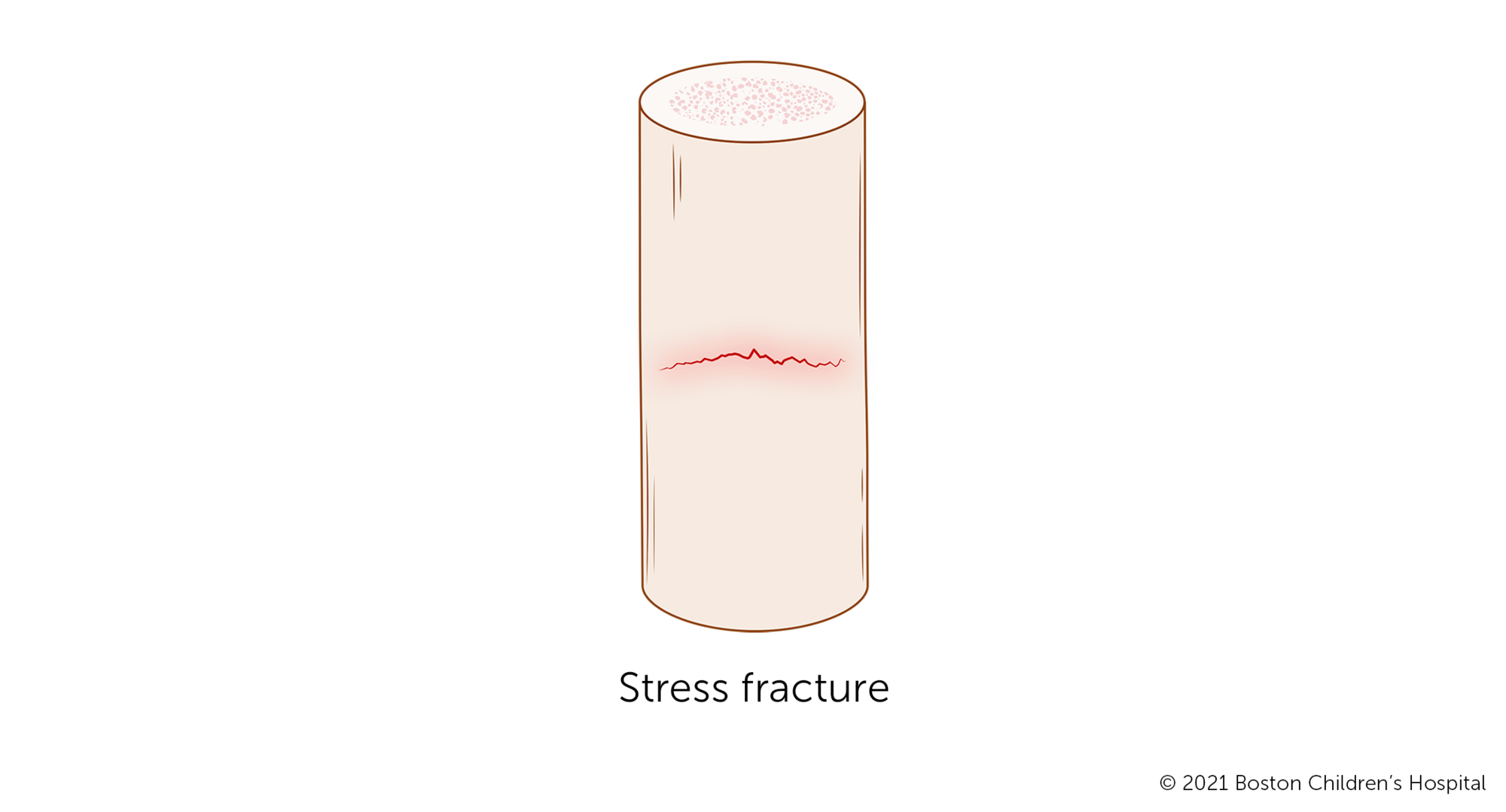Stress Fractures | Symptoms & Causes
What causes stress fractures?
Stress fractures are a common type of overuse injury caused by putting stress on the same part or parts of the body repeatedly. Early sports specialization, intensive training for a single sport year-round with little time off or cross-training, increases an athlete’s risk of stress fracture.
Stress fractures are most common among athletes whose sports involve high-impact contact with the ground or floor. Some examples include:
- running
- gymnastics
- dance
- basketball
- tennis
- track and field

What running mistakes lead to injury?
A runner’s form, everything from how they land on their feet to the angles of their ankles, knees, and hips, can put them at risk of, or help protect them from stress fractures and other injuries.
Training too hard without proper conditioning increases an athlete’s risk of developing a stress fracture. When the athlete’s muscles become overly tired and can no longer absorb the impact of training or competition, the stress is transferred to the bones.
An athlete’s risk of a stress fracture also increases if they have flat feet (fallen arches), which unevenly distribute the stress from impact.
Other risk factors include:
- running on hard surfaces
- running with improper footwear
- eating disorders
- osteopenia (low bone mineral density) or osteoporosis (loss of bone density)
What are the symptoms of a stress fracture?
The most common symptoms of a stress fracture are pain and inflammation around the injured area. These symptoms resemble those of shin splints, so a proper diagnosis is important.
What are some strategies to prevent stress fractures?
- proper conditioning and training (especially cross-training)
- sport-appropriate equipment and protective gear
- adequate rest between exercise sessions
- a diet rich in calcium and vitamin D (especially for teenage girls)
Stress Fractures | Diagnosis & Treatments
How are stress fractures diagnosed?
The first step in treating a stress fracture is forming an accurate, timely diagnosis. Your child’s doctor or sports medicine specialist will take a medical history and perform a physical exam.
Your child’s diagnosis will likely also include x-rays so their clinician can look for signs of a fracture. But because some stress fractures can’t be seen on x-ray, the clinician may also use an MRI (magnetic resonance imaging) or CT scan to get detailed images of the injury and determine if there’s a stress fracture. In rare cases, they may also order a bone scan.
How are stress fractures treated?
The primary therapy for most stress fractures is simply to rest the injured foot or leg — restricting weight-bearing actions and all activities that involve stressing the injured area for a period of weeks or months.
Your child’s doctor may recommend “R.I.C.E.” (rest, ice, compression, and elevation), as well as medications to help control pain and swelling.
- Rest: Your child should not exert themselves in any way that involves the injured area. They can use crutches or a cane, if it helps keep weight off of their injured leg.
- Ice: Wrap a towel around ice cubes, or use a bag of frozen vegetables, to ice the area at two-hour intervals, for 20 minutes each time.
- Compression: Wrap a bandage or soft brace (from the drugstore) around the injury.
- Elevation: Your child should remain seated or reclining with their leg elevated as much as possible.
Your child’s doctor may also recommend a cast or walking boot in order to:
- relax the stress on the leg
- protect the leg from further damage
- force the athlete to rest
If your child has a more severe stress fracture, their treatment options may include:
- temporary use of crutches or a wheelchair
- physical therapy to stretch and strengthen the injured muscles and tendons
- surgery (less common, but is sometimes needed)
How long will it take for my child to recover from a stress fracture?
Depending on the severity of the injury, your child should heal in a matter of weeks or months. Your child's doctor will give you guidance regarding:
- how long your child should rest their foot or leg in order for it to heal
- tools for getting the injured foot or leg back in shape, such as massage, stretching exercises, and strength training
Most kids with stress fractures can return to sports and regular activities after several weeks or months of rest and healing. But during the healing period, it's important for you and your family to support your young athlete's resolve to rest the healing area. Many athletes feel disappointed and sad when they are not able to play their sport.
Once your child’s fracture has fully healed, their doctor will clear them to go back to sports.
How we care for fractures
Every year the Orthopedics and Sports Medicine Center at Boston Children’s Hospital treats thousands of children, adolescents, and young adults with fractures of all complexities. Thanks to our pediatric expertise, we can precisely diagnose conditions related to the growing musculoskeletal system and optimal care plans.
At our Orthopedic Urgent Care Clinics, we care for injuries that require prompt medical attention but are not serious enough to need emergency room care. We offer urgent care services in four locations: Boston, Waltham, Peabody, and Weymouth.


